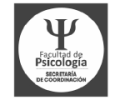
As a digital extension of physical museums, virtual museums overcome the limitations of space and resources, meet the demand for remote access, and play an important role in cultural heritage preservation and education. However, traditional virtual museums are often limited to simple navigation and display functions, lacking in-depth interaction and struggling to provide personalized learning experiences. To address this, this paper designs an interactive virtual museum (IVM) system, using the Sanxingdui culture as an example, which includes various types of serious games in nine applications. The aim is to provide a more immersive and personalized cultural heritage learning experience. The study constructs three types of IVMs: a personal computer-based virtual museum (PC-IVM), an augmented reality virtual museum (AR-IVM), and a mixed reality virtual museum (MR-IVM), and evaluates their impact on the museum educational experience. In an within-subjects design experiment, 30 school participants and 12 museum visitors were recruited to measure 9 user experience dimensions, including learning motivation, engagement, flow experience, etc. The quantitative results showed that MR-IVM significantly outperformed other forms in all dimensions and demonstrated higher usability. Qualitative analyses further indicated that the majority of participants enjoyed experiencing the MR-IVM platform, and was more popular in action-adventure and puzzle-solving games. However, AR-IVM was more favored by participants in casual-competitive games. The study suggests that the designed extended reality (XR) system has a positive impact on museum cultural education, effectively complementing the physical museum experience and enhancing user engagement. Through gamified learning, it further improves learning outcomes. The results provide valuable insights for the future application of XR technology in cultural heritage education and open new directions for the development of virtual museums and the promotion of game-based learning
This article includes within its reference the following normative study:
Huang, Xin & Li, Yuzhi & Tian, Feng. (2025). Enhancing User Experience in Interactive Virtual Museums for Cultural Heritage Learning Through Extended Reality: The Case of Sanxingdui Bronzes. IEEE Access. PP. 1-1. DOI: 10.1109/ACCESS.2025.3556938.












Este proyecto ha recibido financiación de la Unión Europea del programa de investigación e innovación
Horizon 2020 bajo el acuerdo Nº 733901
© 2025 Nesplora S.L.